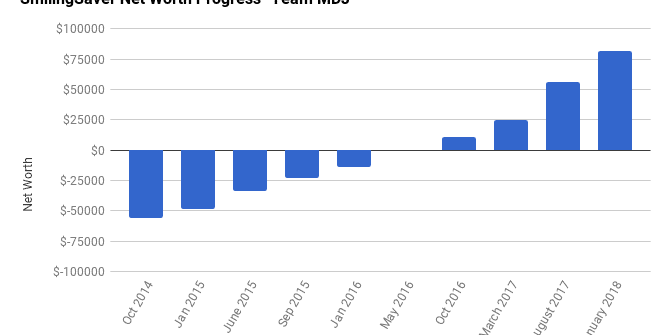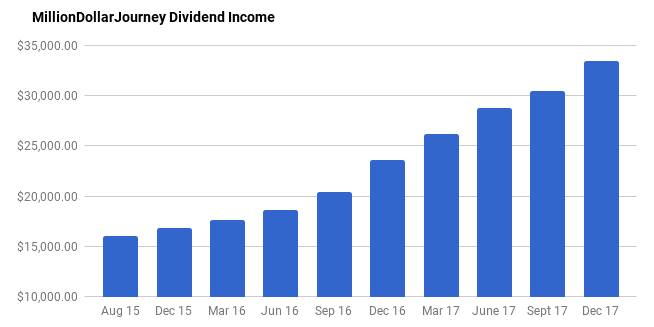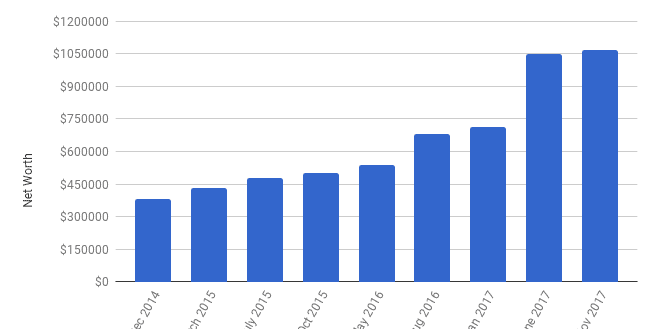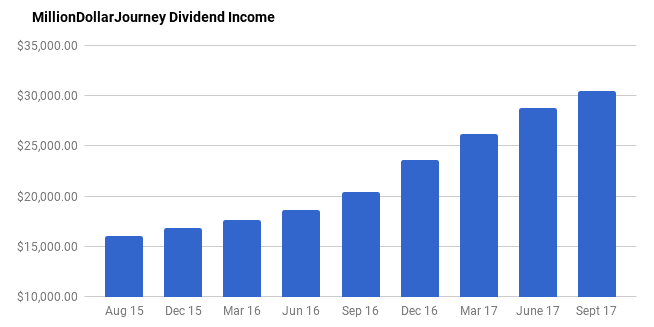Canada’s 2024 Budget – New Taxes on Capital Gains
Canada’s new tax rules on capital gains mean that you’re now likely to pay more taxes if you own a cottage, pass away with an unregistered online brokerage account, or investing inside of your corporation.
Of course, right when I’m in the middle of writing a series on corporate taxes for CCPCs and am writing the final chapter on why capital gains are so great when investing within Canadian corporations, the government has to go and throw a wrench into the whole thing!
There were so many announcements in the Liberal government’s unveiling of the budget this past week that it can be really difficult to figure out what it all means. Some of the numbers are stretched over five years, while others take effect immediately.
From a personal finance perspective, the one thing that should have caught everyone’s attention was the new tax on capital gains. Sure, there are other things that might affect your pocket book, and one could argue that ten years from now, housing prices might finally start coming down as a result of actions taken in this budget – but the most immediate change that will be felt is the raising capital gains inclusion rules from 50% to 66.67% on certain individuals and corporations.
I wrote about my pick for the best financial planners in Canada a few months ago, so I wasn’t surprised to find out that Jason Heath was a prominent media commentator in regards to fleshing out the practical details of this new tax law. If you want personalized advice on how to make the best of this new tax world, you can click here to book a call.
What Is the New 66.67% Tax On Capital Gains?
So the liberal government isn’t exactly “changing the tax rate” on capital gains, what they’re going after is what we call the inclusion rate.
Right now (and for the next 10 weeks) the CRA only taxes half of the capital gains you make.
In other words, if you had bought a stock for $50 and sold it for $100, you had a capital gain of $50. Only half of your $50 capital gain (so $25) would be added to your taxable income for the year.
This 50% inclusion rate was a result of people arguing that businesses had already paid tax as they built the company up, so a capital gain should take that into consideration. The new inclusion rate will be 66.67%.
There is also no doubt that wealthier households get to make better use of capital gains tax laws than the average Canadian family does. This change in the 2024 budget is aimed directly at wealthier individuals, and I would argue, even more directly at upper-middle-class business owners.
The reason I’m singling out business owners here is that the new capital gains inclusion rate of 66.67% will apply to any investments made inside a corporation. If you’re a well-to-do doctor, general contractor, or other business owner, who decided to build an investment portfolio within their corporation (a topic I just wrote a massive article on – which will now have to be revised before publishing – so stay tuned for that), then you will pay the new capital gains tax from your very first dollar in capital gains each year.
That first-dollar threshold is different for individuals than it is for corporations. When it comes to an individual’s taxes, they get to realize up to $250,000 in capital gains per year before they will have to pay tax at the new inclusion rate. Even if they realized $300,000 in capital gains in a given tax year, the new 66.67% capital gains inclusion rate would only be applied to the last $50,000 of capital gains income.
The government is giving Canadian taxpayers a 10-week window to decide if they want to realize capital gains now in 2024 at the “old inclusion rate” of 50% – or to wait and then see the new 66.67% inclusion rate being applied.
One could imagine a scenario where one major discussion point in the Finance Minister’s office was that this new tax will no doubt “scare” many taxpayers into realizing capital gains in 2024 – thus artificially boosting tax revenues for this single year (as people hurry to sell now and avoid the new tax).
If this occurs, it will artificially “pull forward” a lot of 2025’s and 2026’s capital gains as taxpayers seek to “get in under the wire” before the new tax rate comes in. That is quite likely to result in a significant one-time boost to tax revenue and create a smaller deficit for 2024.
There is an election in 2025.
I don’t know how much these facts have to do with each other, but it seems like a heck of a coincidence.
In any case, here’s how I believe it will affect some common situations that Canadians might find themselves in.
CCPC Business Owners Who Invest Inside Their Corporation
It’s pretty obvious that this government has really targeted successful small business owners over the years. First it was the tax splitting rules and passive income thresholds. Next it’s the refusal to raise the $500,000 annual small business deduction in line with inflation.
Now we get a really specific blow to the business owners who have decided to invest with their corporations for the long-term. It’s increasingly clear that the government does not want folks who make a large profit in their small businesses to use their corporations for long-term tax planning. They want them to take their profits out, and pay the same types of taxes that an average “T4 employee” has to pay.
Now, reasonable people can disagree on if this is good policy. I see the argument on both sides.
Regardless, the more practical consideration that all Canadian Controlled Private Corporations (CCPCs) need to think about right now, is if they should sell some portion of their portfolios now – before the new rate kicks in – and then use their Capital Dividend Account (CDA) to get some of that money out of the company ASAP. Once again, I would defer to Jason Heath’s team at Objective Financial Partners for the best way to structure your corporation-plus-personal tax game plan for this year.
If this new tax sticks, it will be a fairly significant blow to upper-upper class business owners who have decided to invest within their corporation. That said, it should be pointed out that this new law will not affect the majority of small business owners.
If your business makes less than $250,000-ish in profit each year, you are probably best off paying yourself a salary and/or using legal income splitting strategies to pull profits from the corporate side of the income fence, to the personal side.
This strategy maximizes RRSP room, sets up a solid baseline CPP payment that future you is likely to be thankful for – and now – it also allows you to snag a more beneficial tax rate on your long-term capital gains even if you have to invest outside of your corporate account.
For these types of small businesses, they are unlikely to ever be affected by the new capital gains tax rate.
Personal Capital Gains On Annual Tax Returns
In a bid to shield middle-class Canadians from this increase in capital gains taxation, the government announced that it allows people to realize up to $250,000 per year under “the old inclusion rate” of 50%.
In technical terms we like to call that a whack of cash!
Look, if you’re realizing more than a quarter million of capital gains each year – you probably don’t need my advice to manage your money. Those are investment gains made outside of your RRSP, TFSA, and RESP accounts (which presumably you have maxed out).
In other words, the new capital gains inclusion rate is unlikely to affect many people on their annual tax returns each year. BUT…
An Inheritance Tax by Another Name?
Here’s where the new capital gains inclusion rate could bite middle-class Canadians.
When you pass away in Canada your assets are generally part of the “deemed disposition” at fair market rate (provided you do not have a spouse to tax-lessly rollover assets to).
These assets do not first get split amongst heirs – and then taxed.
They are taxed as if everything was sold at the moment of death – and then the estate is disbursed.
Let’s take a look at the possible changes in the estate of an upper-middle class Canadian.
Sarah the Saver was a happy 91-year-old Canadian who had lived a fulfilling life. Because Sarah and her husband Fred the Frugal both enjoyed good jobs and lived well within their means during many prosperous decades in Canada, Sarah had ended up in the following situation.
- Sarah has a non-registered brokerage account worth $1.7 million.
- Sarah and Fred purchased a cottage property in southern Ontario 60 years ago.
- Thirty years ago, Sarah and Fred purchased an income property in order to help fund their retirement.
Due to not spending much in her final years (quite a common phenomenon in Canada) and some excellent low-cost investing advice received many years ago, Sarah has a non-registered account worth $1.7 million, with $1 million of that amount being a capital gain.
The cottage property had been purchased for a pittance ($10,000) back in the day, and was now worth $800,000. Sarah and Fred had never really taken the time to read about how Adjusted Cost Base (ACB) worked in regards to the family cottage, and so Sarah had kept very few renovation bills or anything else over the years. Consequently, there was a probable capital gain of $760,000 due on that cottage property.
Finally, that income property that Sarah and Fred had purchased for $200,000 in 1994 (at the end of Canada’s last big housing downturn) was now worth an astonishing $1.2 million due to its location in the GTA. While there is some paperwork filed away that details the legal fees and land transfer taxes paid to complete the purchase from thirty years ago, there’s still a $900,000 capital gain after a small renovation was taken into consideration.
[Note: Sarah also owns a valuable family home, and that asset will go to her estate without any capital gains tax owing no matter when she passes away.]
So this would be a simplified look at how Sarah’s final tax filing would look if she passes away in 9 weeks, versus if she passes away in 11 weeks – when the new capital gains tax rules kick in.
Sarah received a few thousand dollars of CPP and OAS in 2024 (this was her sole income, but if Sarah had enjoyed a defined benefit pension or was receiving annuity income, this would count as well). After the deemed disposition of her assets, her estate would be left with a tax bill for $2,660,000 in capital gains.
- The small amount of OAS and CPP earnings would be taxed the same way.
- The first $250,000 of capital gains would be taxed the same way – at a 50% inclusion rate.
- The next $2,410,000 would result in $1,205,000 being added to Sarah’s taxable income in 2024 if she were to pass away in the next 10 weeks.
- If Sarah were to pass away in 11 weeks, her estate would be subject to the new capital gains rules, and consequently $1,606,747 would be added to Sarah’s taxable income due to the 66.67% inclusion rate.
- The difference on Sarah’s final tax bill is going to come to about $215,000 depending on when she passes away due to Ontario’s top combined income tax rate of 53.53%
Sarah and Fred were obviously a very fortunate couple, but I would argue not an “extreme” example given what has happened to the price of real estate over the last few years, and how many decades their non-registered investments had to compound. I use this example to illustrate how this new law might affect someone who doesn’t consider themselves to be in the “top .13%” as the government stated on Tuesday.
Capital Gains Decisions to Make in 2024
It will be interesting to see what Canadians choose to do over the next few weeks – especially those folks who have $1 million+ investment portfolios to consider.
Will we see more Canadians start to move assets overseas?
Moving away is unlikely to help as that exit tax is going to sting more with this capital gains increase as well!
One thing is for sure, if prosperous small business owners were not already in the Conservative’s camp, they likely will be after this announcement. I think that Pierre’s team is likely to see a lot more donations from this group in the near future. The obvious hope would be that the Conservative’s would reverse this tax change if they were to get back into office.
And that’s the even more interesting aspect of this whole thing… will Canadians just keep holding on to their capital gains in the hopes that a new government will lower the rate back down again?
If that were to happen, whoever held onto their assets and didn’t sell wouldn’t have had to pay any increased taxes because capital gains only get taxed when they’re “realized” by the asset being sold. Essentially, are we willing to bet that the capital gains inclusion rate will go back down, or cut laws and realize gains in the next 10 weeks?
Some Good News for Business Owners
It wasn’t all bad news for Canadian small business owners. Indeed, many moderately-prosperous businesses will come out ahead on this budget due to:
- Carbon tax rebates for small businesses.
- A Canadian Entrepreneurs’ Incentive that will mitigate some of the above capital gains tax increases – but only for select companies (and which sectors were selected appear to be pretty random).
- An increase to the lifetime capital gains exemption (LCGE) from $1 million to $1.25 million. If a couple co-owns a business together, they can now sell it for $2.5 million before paying a dollar in taxes.
I've Completed My Million Dollar Journey. Let Me Guide You Through Yours!
Sign up below to get a copy of our free eBook: Can I Retire Yet?











I’m in favour of these changes.
I am curious what the definition is of “upper middle class” these days. My wife and I are “T4 employees” each with (just barely) six figure income. These changes will never affect us, except perhaps when the last one of us passes.
I get it that doctors are commonly mentioned as most affected by these changes, and so too would be other examples like you mentioned Kyle, contractors, maybe individual lawyer practices, and the like.
But, my opinion is that these professions are clearly in the “upper class” – no middle.
As I understand it from sources, this change brings the taxation to corporations more in line with the way salary and dividends are taxed. It does seem that, in some ways, these changes are levelling the playing field. I simple don’t accept any argument that suggests me, as a T4 employee, should be required to pay more taxes on my income compared to someone with a personal corporation.
And for those who have, or might inherit, a secondary property – I’m not going to worry about how their fortune / wealth is affected by these changes.
And to be clear- we have a decent non-registered portfolio, and it is possible at death there will be considerably higher taxes to pay with these changes. Again, I’m okay with that. It’s up to me to carefully manage the portfolio and withdrawal strategy to optimize taxation.
If you are T4 employees making $100,000+ each a year you likely also have a pension with an employer contribution. The doctors, lawyers and business owners targeted by this tax aren’t so lucky. Doctors and lawyers, after an expensive education, often don’t start their careers until late 20s or early 30s even. Business owners, despite the very real risk sometimes of losing everything, can take many years to start paying themselves a decent salary. Now these people have ten weeks to adjust the retirement plan they may have had for years. This tax change affects far more than the top 0.13% of taxpayers that the government spin would have us believe.
I mostly agree with you Keith – but to be clear, most T4 employees do not in fact have an employer pension plan. Less than a third of working Canadians have either a DB or DC pension plan.
That seems like a balanced comment James. From what I can tell “upper middle class” is definitely whoever “you” are. “Upper class” (aka: “rich”, “wealthy”, “elite”) are whoever makes more than you. No need to define this based on dollar amounts ;)
Seriously though, I know several people who make more than a quarter-mill per year who consider themself “upper-middle” – and compared to folks that inherit millions they have a bit of a case to be made. I think more than ever terms like “upper” and “middle” class are more directly tied to inherited assets (or self-built assets for that matter) than earned income in a given year.
Given where I grew up, a lot of people have socked away a lot of time and cash into their cottages. There is an interesting argument there on if they should be taxed more than someone who invested in the stock market (and could strategically realize less than 250K per year of capital gains). Heck, while we’re at it, why should they pay more than someone who owned a larger more valuable home in Toronto (and who could fully benefit from the no-capital-gains on a home rule) versus their relatively moderately priced home and cottage in a rural area? Like you say, there are much larger injustices in the world than folks paying more tax on a second home inheritance. That said, in order to be completely fair, I’d be intersted in seeing what would happen if we just did away with the capital gains on the home exemption altogether, and encouraged folks to invest in more productive assets. Lots of positive spin-off benefit to go along with all that “upper-middle class” anger that would no doubt be triggered!
So, if I understand your perspective, the issue, to some degree, is that me as a non registered stock investors can be more strategic with my capital gains as it’s unlikely I will ever have to trigger a capital gain > $250k vs someone with a cottage can’t sell half a cottage. Yes, I think that’s true, but they always knew they’d have to sell a whole cottage, and take the whole gain at once. I suppose if I were lucky enough to be in the position of having a second property with a potential gain of > $250k I might see things differently.
Yup that’s what I was getting at James. Certainly not too many people are going to shed a lot of tears for folks with cottages in any case!
To keep it simple, the net effect is that this results in approx 8.33% more in taxes owing, or $8,333 for each additional $100K in CG > $250K, assuming a marginal tax rate of 50%.
(the difference between the inclusion rates times the marginal tax rate)
(66.67% – 50%) x 50% = 8.33%.
You then have to decide if incurring CG now is worth trying to save 8.33%.
That’s the annual effect SMayer. The more important effect is likely to be on corporations/trusts, as well as taxes at death.
Yes, I agree with this, and this is where I will have to deal with my large (for me) non-registered portfolio as my expectation is to only use the dividends it generates in retirement. This will undoubtedly lead to large capital gains if I don’t harvest them before my passing. It will be important to me to incur some
gains along the way even though I won’t need the income (he said, confidently ;) so that my heirs don’t take the full brunt of any capital gains, let alone gains >$250k.